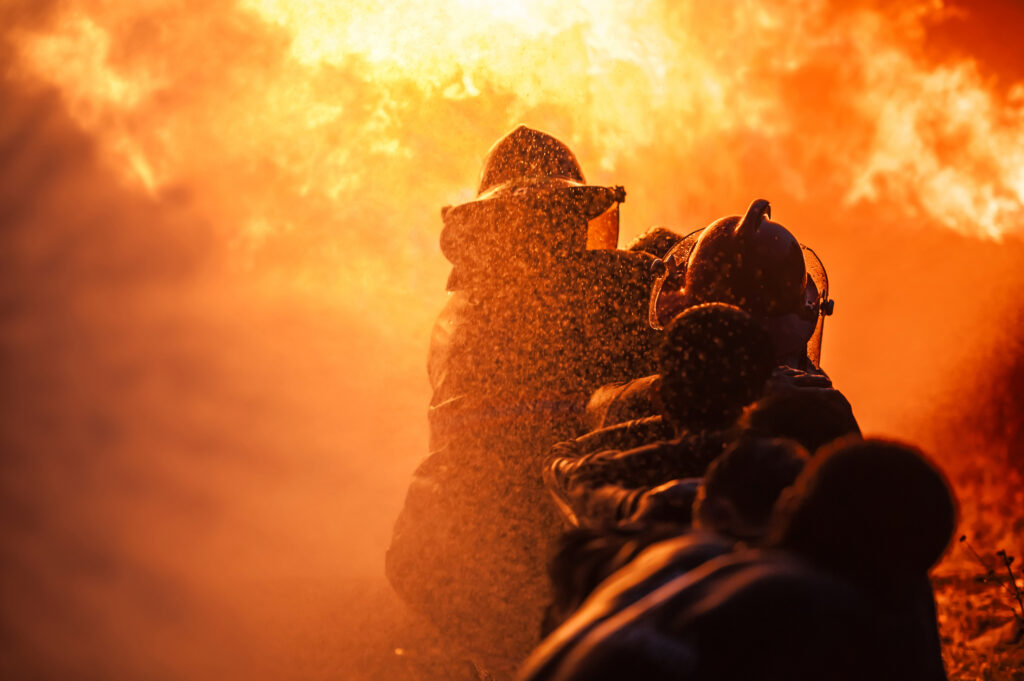
Front Seat: Safety precautions in the rural fire setting
By Jason Clark
Features Photo credit: Thanarak / Getty Images
Photo credit: Thanarak / Getty Images We often think about safety after close calls with an injury to a firefighter or when we hear that a crew gets caught in a rapid-fire development situation. In our industry, these incidents don’t even have to occur within our department for us to see them. With the technology of cell phones and helmet cameras, we can witness when crews worldwide run into those incidents—the ones that often send cold shivers up our spines—and we hope never to encounter them.
When I became a captain, it became apparent that my role changed regarding safety and what was expected of me. The Occupational Health and Safety Act in Ontario has several definitions that outline who a supervisor could be, including someone responsible for ‘directing and monitoring how work is performed’.
The reality is that with every call or response we go to, there is a risk that we need to mitigate with experience, situational awareness, and, of course, training. As a captain, I am responsible for supervising my crew and ensuring we are all working safely.
Most barn fires I have been to in my 17 years have been mostly defensive operations. Due to the obstacles of water supply and rural settings, the amount of destruction was predetermined prior to our arrival.
However, several summers ago, my crew and I assisted a neighbouring municipality with a structure fire on a rural dairy farm. The fire had not travelled to a portion of the barn yet, and the crews had a very stable cut-off point they were working on from a ground position, keeping the flames away from it.
The safety concerns were apparent from very early on. As my crew stretched a second line to assist with keeping the fire halted at its current position, we were met by cattle that started to evacuate from an exit at the back of the barn. I was already keeping the collapse zones of the building and the fuel tanks that were close by in the forefront of my mind, as well as the safety hazards they presented, and then I was met with several cows coming towards my crew at a fast pace. We were between the barn and another building in a crouched position, so in this makeshift alley, the cattle were coming towards us with only one small turnaround point. I was worried my crew and I were about to get trampled.
The reality is that with every call or response we go to, there is a risk that we need to mitigate with experience, situational awareness, and, of course, training.
You don’t recognize the size of these animals when you are driving by a field and see them at a distance. That appreciation becomes apparent when they are a few feet away, trying to flee a smoke-filled barn. I honestly didn’t know what to do then, and no training prepared me for what I was looking at – I didn’t even know if running was an option. However, when I stood up, my flashlight and the flashing lights on my air pack stopped the first cow in her tracks. I was thankful that the cows decreased their speed, turned around and headed in the opposite direction.
The cattle ran into the capable hands of several neighbouring farmers who brought trucks and trailers to load them up, ready to take them to another barn a few farms away. I informed my command that we had livestock on the fire ground, and the crews were told to be cautious while the farm staff loaded up the last of the remaining cattle.
No textbook or course prepared me for that, and I was more than happy with the outcome. It was an afterthought that livestock would be a problem out of all the safety concerns on the fire ground, although it should have been obvious that when we arrived at a barn full of livestock, this could be something we had to deal with.
Keeping your head on a swivel and staying a couple of steps ahead of safety concerns and how to mitigate them is a great way to prepare yourself as a future captain and supervisor. Always remember that there are things that will catch you off guard, and you will have to adapt and overcome them along the way.
Jason Clark has been a volunteer firefighter in southwestern Ontario since 2007. Having made the transition from firefighter to captain, Jason shares perspectives on roles in the fire service and riding in the front seat. Contact Jason at jaceclark71@gmail.com or @jacejclark.